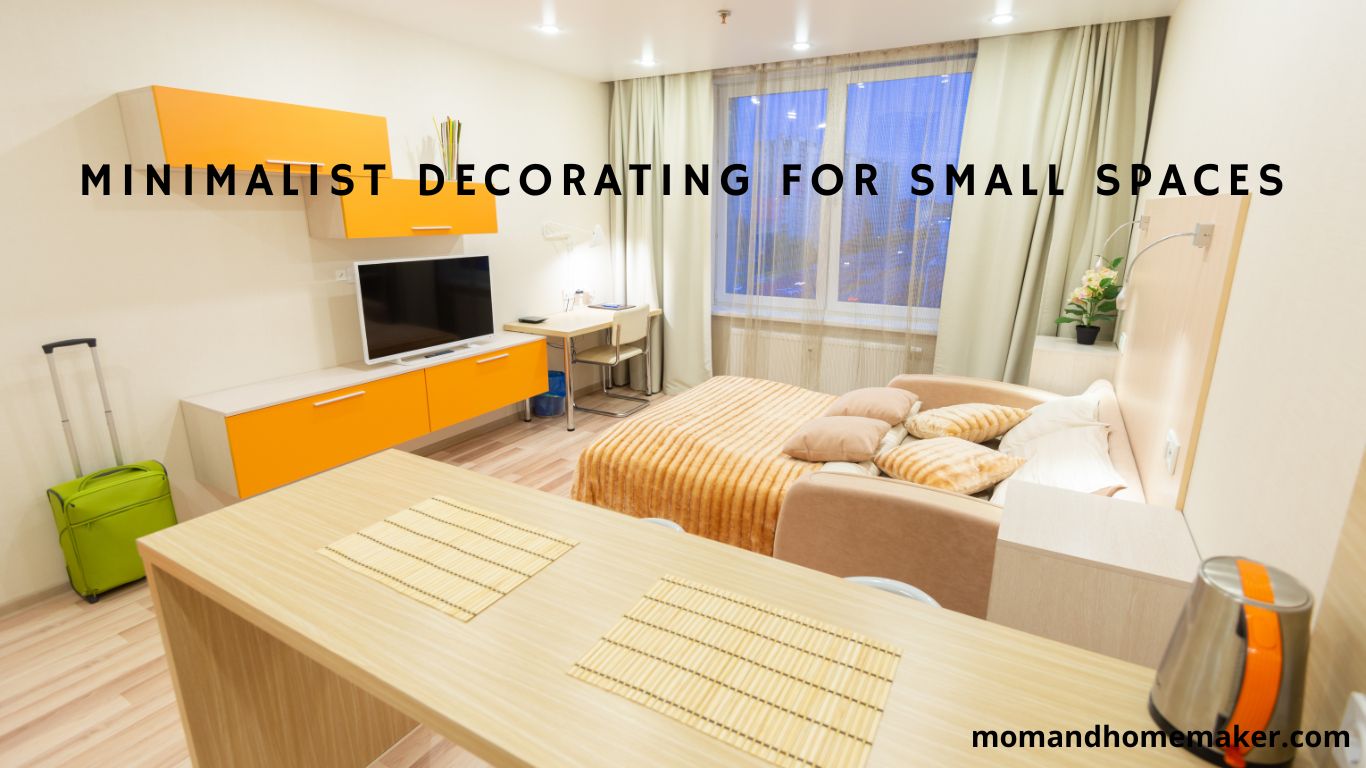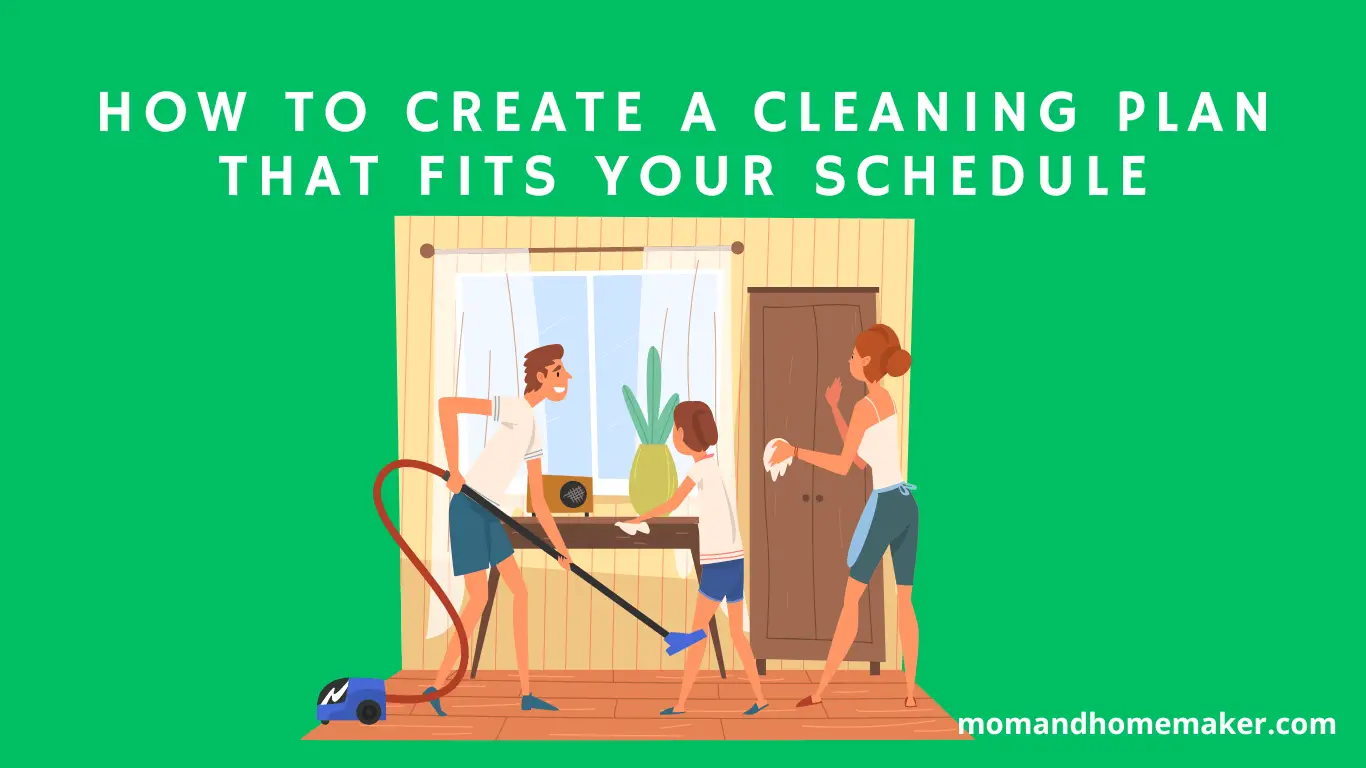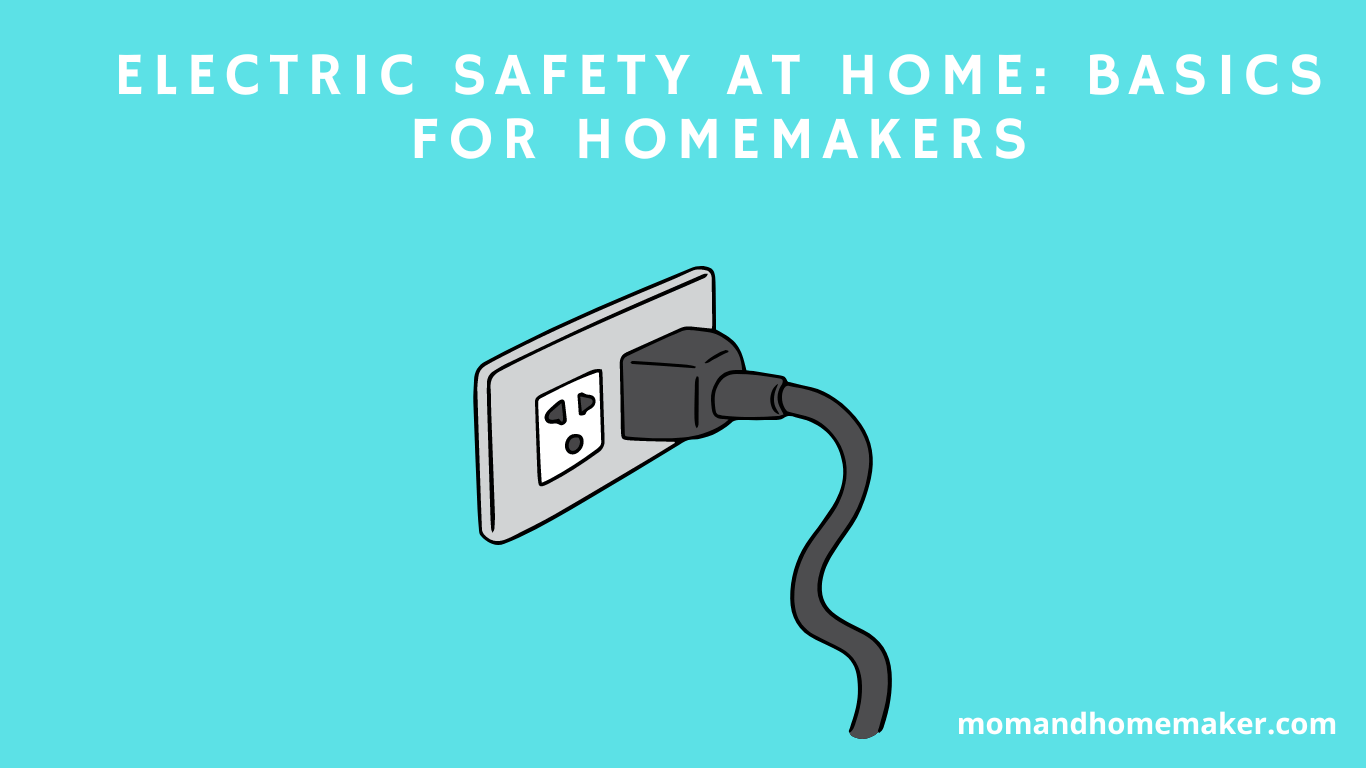Minimalist decorating for small spaces is a trend that has been gaining popularity in recent years. This design style is all about simplifying your living space and maximizing functionality, making it perfect for those who are looking to make the most out of a compact area.
With its emphasis on clean lines, neutral colors, and clutter-free environments, minimalist decorating creates a calming and peaceful atmosphere in small apartments, tiny homes, or compact urban dwellings. By embracing a minimalist approach, you can transform your small space into a serene and stylish sanctuary.
The benefits of minimalist decorating and practical tips to help you achieve a clutter-free and inviting space are discussed in this write-up.

Benefits of Minimalist Decorating
One advantage of minimalist decorating in small spaces is that it allows you to make the most of the available square footage. By getting rid of unnecessary clutter and selecting furniture and decor that serve multiple purposes, you can create a more open and spacious environment. This can contribute to a greater sense of comfort and relaxation in your living space, fostering a feeling of belonging and contentment.
Additionally, minimalist decorating promotes a sense of tranquility and simplicity, which can help reduce stress and create a calm atmosphere. The minimalist approach also encourages you to be more mindful of your belongings, assisting you in prioritizing what truly matters to you and letting go of excess. This can lead to a more organized and efficient lifestyle, making it easier to find what you need and maintain a tidy space.
Assessing Your Space
How can you effectively evaluate your small space for minimalist decorating? When it comes to maximizing your limited space, assessing how you currently use each area in your home is crucial. Take a step back and analyze if any unused or underutilized spaces can be repurposed.
Another important aspect to consider is optimizing furniture placement. Arrange your furniture in a way that maximizes the available space and creates an open and airy atmosphere.
It’s essential to assess your storage needs. Identify the essential items and find creative ways to store them out of sight.
Furthermore, it’s crucial to analyze the natural light in your space. Consider how light enters the room and use it to your advantage.
Lastly, think about the functional flow of your space. Ensure that there’s a logical and efficient layout that allows for easy movement and access to different areas.
Choosing a Color Palette
Creating a minimalist and visually pleasing space in your small area involves careful consideration of the color palette. The colors you choose have a significant impact on the mood and atmosphere of the room.
Opt for neutral tones such as whites, grays, and beiges to create a calming and serene environment. To achieve balance and harmony, select complementary colors that are opposite on the color wheel.
Introduce accent colors sparingly to add visual interest, using items like pillows, artwork, or small decorative pieces. Don’t forget to incorporate texture into your color palette by using different fabrics, materials, and finishes. This will create depth and tactile appeal in your space.
Decluttering Your Belongings
Looking to declutter your belongings in a small space? Simplifying your home is all about organizing your possessions and keeping only what brings you joy and adds value to your life.
One area to start with is your wardrobe. Take a close look at your clothes and donate or sell anything you haven’t worn in the past year.
Next, consider decluttering digitally. Delete old files, unsubscribe from unnecessary newsletters, and organize your digital files into folders.
In your minimalist kitchen, get rid of duplicate utensils, appliances, and expired food.
For your home office, keep only essential supplies and regularly clear off your desk.
Finally, in your bathroom, declutter by keeping only the necessary toiletries and organizing them in storage containers.
Maximizing Storage Solutions
To make the most of storage in your small space, start by utilizing every inch of available space. One effective strategy is to maximize verticality. You can do this by installing shelves or hanging organizers on the walls, taking advantage of the room’s height.
Look for furniture that offers hidden compartments or built-in storage, allowing you to keep your belongings organized and out of sight. Multi-functional furniture, like a sofa with built-in storage or a bed with drawers underneath, can also help maximize storage in your small space.
Another great tip is to utilize corners. Install corner shelves or place a tall bookcase in a corner to make use of that often-overlooked space.
Lastly, consider investing in organizing systems such as stackable bins or drawer dividers to keep your belongings tidy and easily accessible.
With these practical storage solutions, you can maximize the storage potential of your small space and create a clutter-free environment.
Furniture Selection for Small Spaces
When it comes to furnishing a small space, it’s important to choose furniture that maximizes functionality and minimizes clutter. By investing in folding furniture, modular sofas, space-saving beds, compact tables, and wall-mounted shelves, you can make the most of your limited space.
Folding furniture is a great option as it’s easily collapsible and can be stored away when not in use. Modular sofas provide versatility as they can be rearranged to fit different layouts. Space-saving beds incorporate storage compartments underneath to maximize space.
Compact tables are small in size but can extend when needed for additional seating. Wall-mounted shelves utilize vertical space and keep the floor area clear of clutter.
By selecting furniture that serves multiple purposes and can be easily tucked away, you can create an organized and spacious atmosphere in your small space. These furniture options not only maximize functionality but also create a cozy and inviting environment.
Utilizing Vertical Space
Maximizing the space in a small living area is all about using vertical space effectively. Incorporating shelves and wall-mounted storage solutions is a practical way to achieve this. Not only do these solutions help you make the most of the available space, but they also add style and functionality to your living area.
One idea is to try vertical gardening, which not only brings greenery into your space but also utilizes empty walls. This is a unique way to create a visually appealing and vibrant atmosphere.
In the kitchen, consider using hanging storage for items like pots and pans, or in the bedroom, for accessories. This solution not only keeps these items within easy reach but also adds a touch of practicality and organization to your space.
If you’re looking to display books, decor, or toiletries, wall-mounted shelves are an excellent choice. They offer a stylish and functional way to showcase your favorite items, while also keeping them off the floor and out of the way.
Tall bookcases are perfect for storing and organizing various items, from books to souvenirs. They provide ample space for your belongings and can be a statement piece in your living area.
For a minimalist and space-saving option, consider floating shelves. These are great for showcasing small plants or decorative pieces without taking up too much space.
Incorporating Natural Light
Maximizing natural light in a small living area is essential for creating a bright and open space. Here are some practical and stylish solutions to help you achieve this.
One way to maximize sunlight is by incorporating reflective surfaces like mirrors or metallic accents. These surfaces can bounce light around the room, giving the illusion of a larger space while making the most of the natural light that enters.
Another tip is to choose window treatments that allow sunlight to filter through. Opt for sheer curtains or adjustable blinds that let in light without completely blocking it. This way, you can control the amount of light in the room while still enjoying the benefits of natural sunlight.
Incorporating natural light has numerous advantages for your small space. Not only does it enhance the overall aesthetic, but it also promotes a sense of well-being and energy, creating a warm and inviting atmosphere.
Creating a Functional Layout
Maximizing natural light in your small living area is important, so let’s focus on creating a functional layout that optimizes your space. A functional layout is crucial for making the most of your limited square footage.
Start by carefully arranging your furniture. Choose pieces that serve multiple purposes, like a coffee table with hidden storage or a sofa that can double as a guest bed. This way, you can maximize space while still providing functionality.
It’s also important to consider the flow of movement within the room. Arrange your furniture in a way that allows for easy navigation and avoids blocking pathways.
Incorporating Multi-Purpose Furniture
Maximize your limited space by incorporating furniture that serves multiple purposes. Multi-functional furniture is a practical and space-saving solution for small living areas.
Instead of traditional furniture, consider options that offer versatility and adaptability to meet your changing needs. For example, a sofa can also be used as a bed or a coffee table with hidden storage compartments.
These multi-purpose pieces not only provide extra seating and storage options but also help create a streamlined and clutter-free environment.
Adding Mirrors to Create Depth
Create depth in your small space by incorporating mirrors. Mirrors have the unique ability to make a room appear larger, brighter, and more spacious. By strategically positioning mirrors on different walls, you can instantly transform the perception of your space.
The reflection of light off the mirrors adds an airy and inviting ambiance, while also giving the illusion of a larger room. Moreover, mirrors create depth by reflecting the furniture and decor, adding visual interest and dynamism to the area.
Don’t hesitate to experiment with mirrors and witness the transformative power they possess in enhancing the depth of your small space.
Using Minimalistic Decor Accents
Enhance the simplicity and functionality of your small space with minimalistic decor accents. These subtle touches can elevate the aesthetic appeal of your home while still maintaining a clean and clutter-free environment.
Consider incorporating minimalistic wall art, such as a simple black-and-white photograph or a geometric print, to add visual interest without overwhelming the space.
Opt for minimalist accent furniture, like a sleek and streamlined chair or side table, to provide both style and functionality.
Add a touch of coziness with minimalist throw pillows in neutral tones or muted patterns.
For table decor, choose minimalist pieces such as a simple vase with a single stem or a minimalist candle holder.
Embracing Negative Space
In order to create a more simple and functional living environment, it’s essential to incorporate the concept of negative space. Negative space refers to the unoccupied area in a room, also known as empty or white space, which allows for an open layout and promotes a minimalist design.
By embracing negative space, you can cultivate a sense of calm and tranquility in your small space.
To achieve this, it’s important to keep your furniture and decorations to a minimum. This will provide more breathing room and simplicity, allowing the negative space to shine. Embracing negative space isn’t just about aesthetics, but also aligns with a minimalist lifestyle. It encourages you to prioritize quality over quantity and find joy in the absence of clutter.
By intentionally incorporating negative space, you can create a harmonious and inviting atmosphere in your small space. This won’t only enhance the functionality of the room but also contribute to your overall well-being.
Implementing Smart Organization Systems
When living in a small space, it’s important to find practical solutions that save space and reduce clutter. By implementing smart organization systems, you can maintain a minimalist lifestyle while optimizing the functionality of your small space.
Consider utilizing vertical storage options like wall-mounted shelves or hanging organizers to make the most of your wall space. Make use of under-bed storage containers or rolling carts to maximize the space under your bed or in tight corners.
Invest in multi-purpose furniture, such as ottomans with hidden storage or coffee tables with shelves, to enhance functionality.
Utilizing Hidden Storage Options
Discover the benefits of utilizing hidden storage options to make the most of your small space. When it comes to organizing small spaces, hidden storage ideas can be a game-changer. These space-saving solutions not only help you store your belongings efficiently but also contribute to a clutter-free and visually appealing environment.
Clever storage hacks, such as using under-bed storage, installing floating shelves, or incorporating multi-functional furniture with hidden compartments, can maximize your storage potential without compromising on style.
By incorporating these hidden storage options, you can create a sense of belonging in your small space, as everything has its designated place, making your home feel more organized and inviting.
Transform your small space into a sanctuary of functionality and style by embracing the power of hidden storage. With the right storage solutions, you can create an environment that’s both practical and aesthetically pleasing.
Creating a Cohesive Design Aesthetic
Achieving a cohesive design aesthetic in your small space requires careful consideration of color, texture, and furniture placement. A minimalist aesthetic emphasizes simplicity and functionality. When choosing colors, opt for a neutral palette to create a calm and open atmosphere. Soft tones of white, beige, and gray can make your small space appear larger and more inviting.
Texture also plays a crucial role in cohesive design. Incorporate various textures through textiles, such as throw pillows, rugs, and curtains, to add depth and visual interest. Furniture placement is key to maximizing your small space.
Choose a functional layout that allows for easy movement and efficient use of space. Consider multi-purpose furniture, like a sofa bed or a coffee table with storage compartments, to enhance functionality while maintaining a cohesive design aesthetic.
Incorporating Plants for a Touch of Nature
To bring a natural element into your small space, consider adding plants to your minimalist decor. Plants not only add visual appeal but also offer numerous benefits. They’ve been scientifically proven to improve air quality, reduce stress, and boost productivity.
When selecting plants for your small space, opt for low-maintenance varieties that require minimal care. Some popular options include succulents, snake plants, and pothos.
To showcase your plants in a stylish and space-saving manner, consider DIY plant stands or hanging planters. These can be easily customized to match your minimalist aesthetic.
Lastly, indoor herb gardens are a fantastic addition to any small space as they provide fresh herbs for cooking while adding a touch of greenery to your kitchen.
Incorporating Minimalist Lighting Fixtures
To enhance your minimalist decor and create a well-lit ambiance in your small space, consider adding sleek and modern lighting fixtures.
When it comes to minimalist lighting options, there are several choices available. You can start by opting for energy-efficient fixtures that not only save electricity but also contribute to a sustainable lifestyle.
Another option is to incorporate unique pendant lights, which add elegance and style to your space while providing focused lighting. Wall sconces are also a great choice as they can be installed without taking up valuable floor space.
If you prefer a more subtle lighting option, minimalist table lamps can provide a soft and cozy glow. Lastly, floor lamps with clean lines can add a modern touch to your space while offering ample lighting.
Maintaining a Clutter-Free Space
Achieving a clutter-free space in your small area can be done by organizing your belongings. By implementing decluttering techniques and organizing strategies, you can create a minimalist and organized living space.
Start by going through your belongings and getting rid of anything you no longer need or use. Categorize and sort your items into designated spaces, utilizing minimalist storage ideas like hidden storage solutions or multi-functional furniture. Clear surfaces and minimize decorative items to maintain a clean and open feel.
Conclusion
Minimalist decorating is a perfect fit for small spaces – a minimalist approach can help small spaces feel less cluttered and more spacious, making it a great option for those who live in tiny apartments or homes. It involves using only essential items and organizing them in a way that promotes functionality and simplicity.
By assessing your space, choosing a color palette, decluttering your belongings, maximizing storage solutions, and incorporating plants and minimalist lighting fixtures, you can create a cohesive and calming design aesthetic.

















